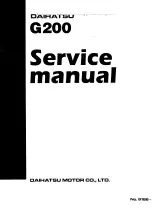
When buying a child seat, you need
to choose either a conventional child
seat, or one designed for use with
the Lower Anchors and Tethers for
Children (LATCH) system.
Conventional child seats must be
secured to a vehicle with a seat belt,
whereas LATCH-compatible seats
are secured by attaching the seat to
hardware built into the rear seats.
Since LATCH-compatible child seats
are easier to install and reduce the
possibility of improper installation,
we recommend selecting this style.
We also recommend selecting a
LATCH-compatible seat with a rigid,
rather than a flexible, anchor (see
page
).
In seating positions and vehicles not
equipped with LATCH, a LATCH-
compatible child seat can be installed
using a seat belt.
Whatever type of seat you choose, to
provide proper protection, a child
seat should meet three
requirements:
Look for FMVSS
213 or CMVSS 213 on the box.
Rear-facing for infants, forward-
facing for small children.
Before purchasing a conventional
child seat, or using a previously
purchased one, we recommend that
you test the seat in the specific
vehicle seating position, or positions,
where the seat will be used.
1.
2.
3.
36
Selecting a Child Seat
The child seat should meet U.S. or
Canadian Motor Vehicle Saf ety
Standard 213.
The child seat should be of the
proper type and size to f it the child.
The child seat should f it the
vehicle seating position (or
positions) where it will be used.
34
















































